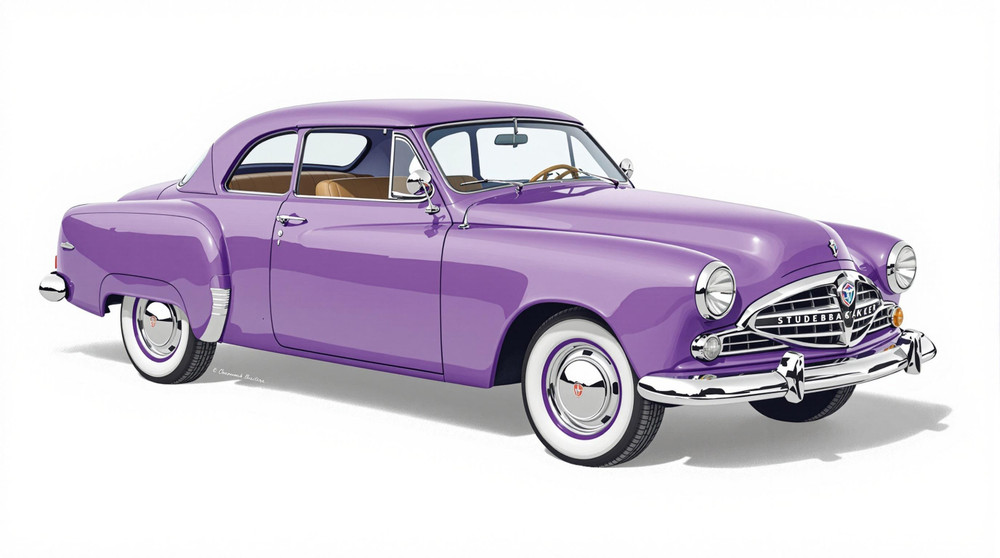Image of 1949 Studebaker Champion, Note: These illustrations use artistic license and may differ from actual historical models.
Performance Metrics
Fundamental Metrics
Emotional Appeal
MMP Rating
| Engine Specifications | |
|---|---|
| Engine: | Inline 6 |
| Displacement: | 169.6 cu in (2.8 L) |
| Horsepower: | 80 hp |
| Torque: | 125 lb-ft |
| Compression Ratio: | 7.0:1 |
| Ignition System: | Distributor and coil |
| Cooling System: | Liquid-cooled |
| Performance Specifications | |
| 0-60 Time: | Estimated 20 seconds |
| 1/4 Mile Time: | Not available |
| Top Speed: | 80 mph |
| Transmission and Drive | |
| Drive Type: | Rear-wheel drive |
| Transmission Type: | 3-speed manual with optional overdrive |
| Fuel and Efficiency | |
| Fuel System Type: | Carburetor |
| MPG: | Estimated 20 mpg |
| Dimensions and Brakes | |
| Brakes: | Drum brakes |
| Wheelbase: | 113 in (2,870 mm) |
| Weight: | 2,700 lbs |
Note: Specifications for classic cars are given to the best of our ability, considering the limited and variant data available.
Unveiling the 1949 Studebaker Champion: A Post-War Automotive Icon
The 1949 Studebaker Champion stands as a testament to post-war American ingenuity and design. Born from the Studebaker Corporation, an automaker with roots reaching back to the days of horse-drawn wagons, this vehicle emerged as a symbol of the nation's recovery and technological optimism. The Champion was not just another car; it was a harbinger of modernity in an era hungry for progress. One particularly intriguing fact about this model is that it was among the first cars to be designed by renowned industrial designer Raymond Loewy, whose vision helped shape the aesthetics of mid-century America.
Design and Innovation
The exterior of the 1949 Studebaker Champion was a departure from the pre-war sensibilities, boasting a sleek profile with a bullet-nose front end that seemed to slice through the air. Its wraparound rear window and smooth, flush surfaces were considered avant-garde for the time. Inside, occupants were greeted with a functional yet stylish cabin, featuring durable materials designed to withstand the rigors of daily use. The dashboard was uncluttered, with gauges that were easy to read at a glance. Technologically, the Champion was ahead of its curve, offering features like an automatic choke and self-adjusting brakes—conveniences that were far from standard at the time. Color options ranged from understated hues to vibrant tones, reflecting the optimism of the era, with Gypsy Green and Rio Red being among the popular choices. Body styles included sedans, coupes, and convertibles, but it was perhaps the Starlight coupe—with its distinctive five-window design—that remains most iconic and sought after by collectors today.
Historical Significance
The 1949 Studebaker Champion's impact on automotive design cannot be overstated. It challenged conventional styling norms and set new standards for aerodynamics in passenger vehicles. Its influence is visible in the designs of many cars that followed, marking it as a pioneer that shaped future trends. What truly set this car apart from its contemporaries was not just its looks but also its commitment to efficiency and practicality during a time when resources were still recovering from wartime scarcity.
Performance and Handling
Performance-wise, the Champion wasn't built to break speed records but rather to offer reliable and economical transportation. Its flathead inline-six engine provided adequate power for everyday driving, with top speeds hovering around 75 mph—a respectable figure for its day. Handling was where this car truly shined; its light weight and independent front suspension allowed it to navigate through various driving conditions with grace uncommon for vehicles of its size. Drivers often remarked on how smooth the ride felt and how responsive it was to their inputs—a symphony of mechanical harmony between man and machine.
Ownership Experience
As a daily driver, show car, or even an occasional racer in vintage events, the 1949 Studebaker Champion fulfilled many roles. Its maintenance needs were typical of its era—regular but straightforward enough for an average owner to handle. Reliability was one of its strong suits; many Champions are still on the road today thanks to their robust construction and simplicity of repair.
Fun Facts
A few fun facts about this classic: Some Champions came equipped with an overdrive transmission—a rarity at that time—and there have been instances where celebrities owned these stylish rides. While it didn't set any speed records, it did make waves for its fuel efficiency, often outperforming competitors in miles per gallon. As for criticisms? Some found its unique front end polarizing; others wished for more power under the hood. Yet these critiques never overshadowed its overall charm.
Collector's Information
Today's collector market sees a wide value range for a 1949 Studebaker Champion depending on condition and originality. While exact production numbers are hard to pin down, estimates suggest tens of thousands were produced across all body styles. As for appreciation value? Well-maintained examples have seen a steady increase in value over time as they become rarer and more desirable among classic car enthusiasts. A ballpark figure for a pristine Champion can range anywhere from $15,000 to $50,000 or more.
Conclusion
The 1949 Studebaker Champion is more than just a vintage vehicle; it's a slice of American history on wheels. With its groundbreaking design and reliable performance, it represents an era when cars were about more than getting from point A to B—they were about ambition and forward-thinking innovation. As we look back on this automotive marvel, we're reminded that true champions never go out of style.
1949 Studebaker Champion Catalog of Parts
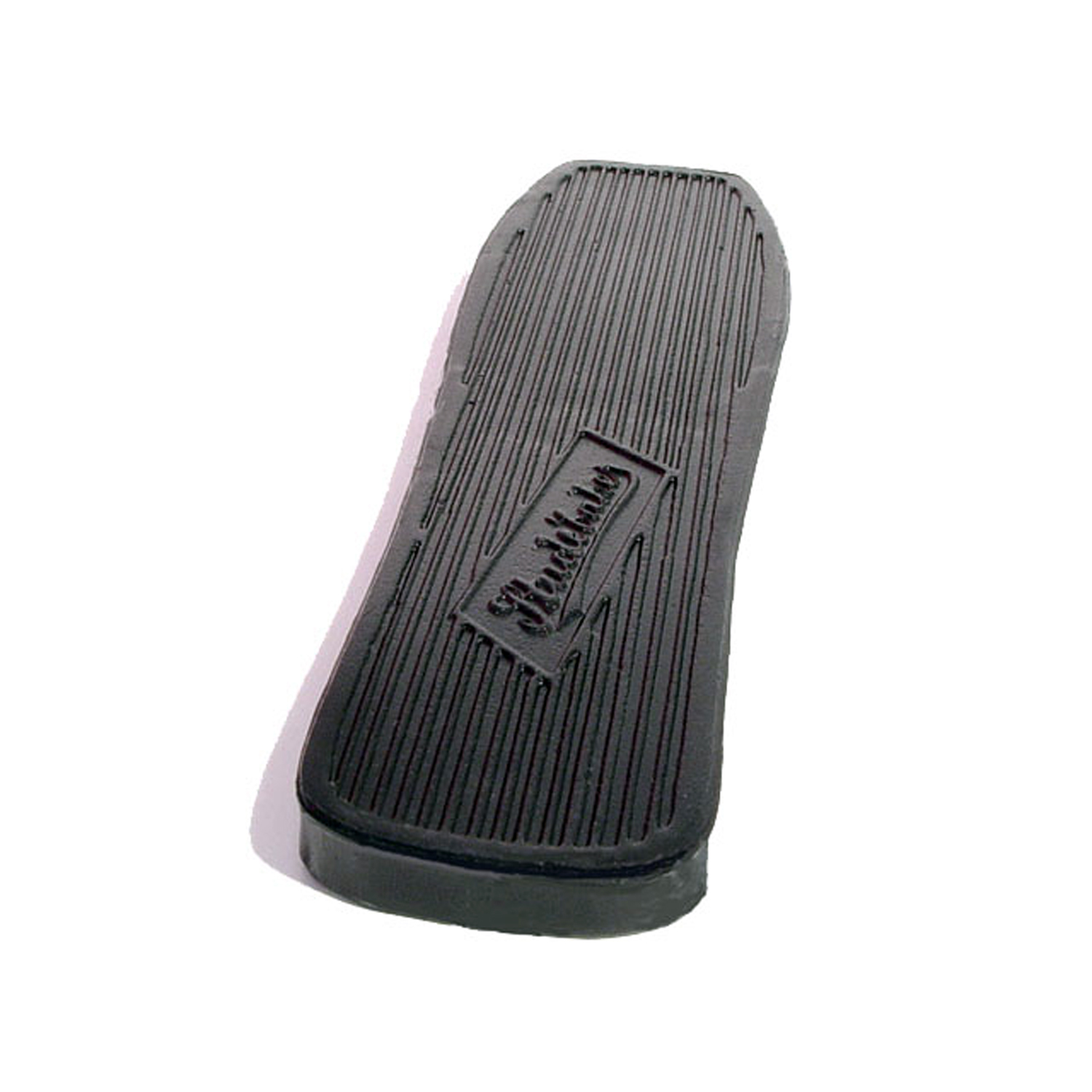 1949 Studebaker Champion Accelerator Pedal Pad, 2-3/8" X 9", Each-AP 22Accelerator Pedal Pad, 2-3/8" X 9", Each
1949 Studebaker Champion Accelerator Pedal Pad, 2-3/8" X 9", Each-AP 22Accelerator Pedal Pad, 2-3/8" X 9", Each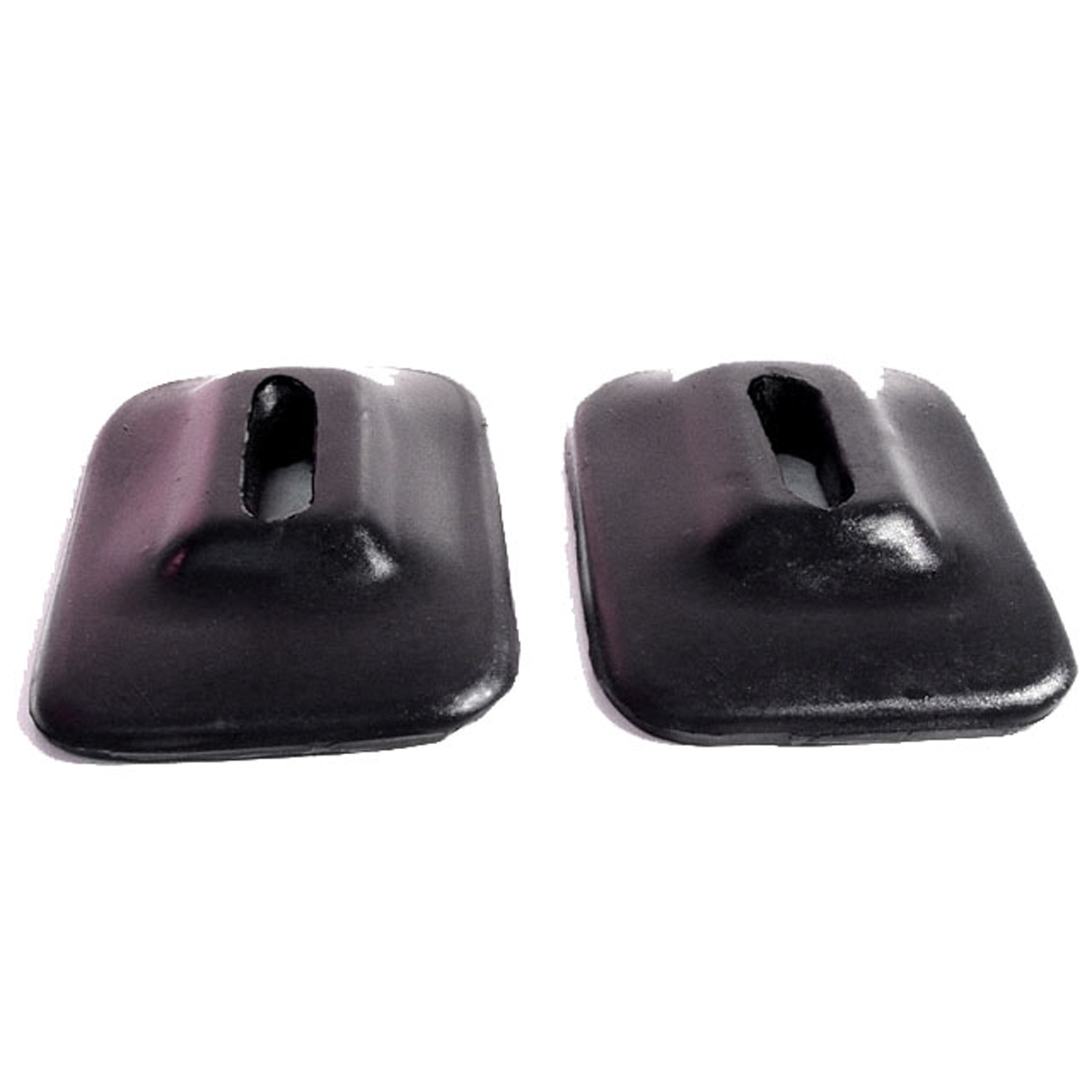 1949 Studebaker Champion Front and Rear Bumper Arm Grommets-BG 45Front and Rear Bumper Arm Grommets. 2-3/4" wide X 4-1/8" long, with 1-5/8" long inner slot. Pair
1949 Studebaker Champion Front and Rear Bumper Arm Grommets-BG 45Front and Rear Bumper Arm Grommets. 2-3/4" wide X 4-1/8" long, with 1-5/8" long inner slot. Pair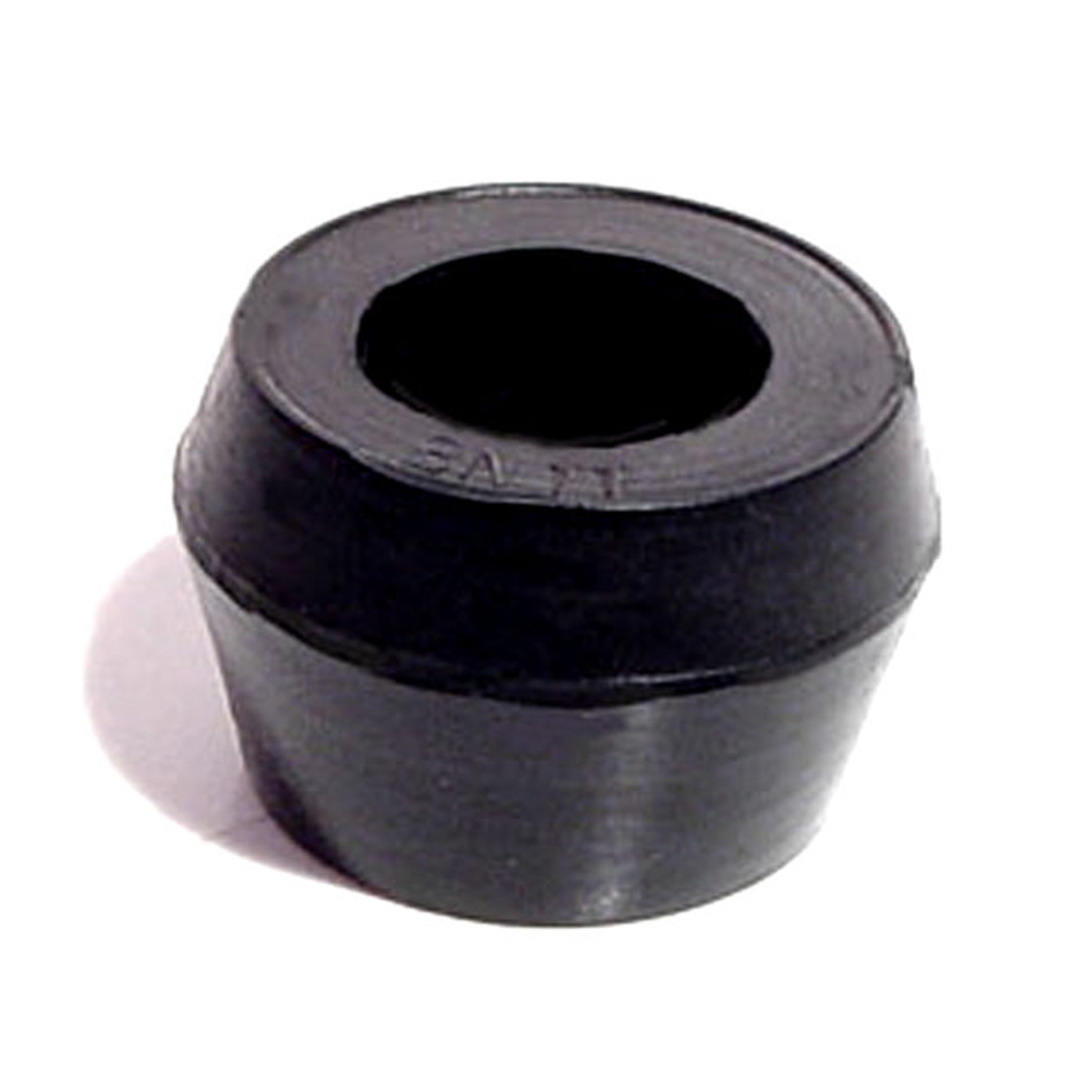 1949 Studebaker Champion Shock Absorber Grommet. 1" bottom O.D-BN 11Shock Absorber Grommet. 1" bottom O.D., 3/4" high, with 5/8" I.D. Each
1949 Studebaker Champion Shock Absorber Grommet. 1" bottom O.D-BN 11Shock Absorber Grommet. 1" bottom O.D., 3/4" high, with 5/8" I.D. Each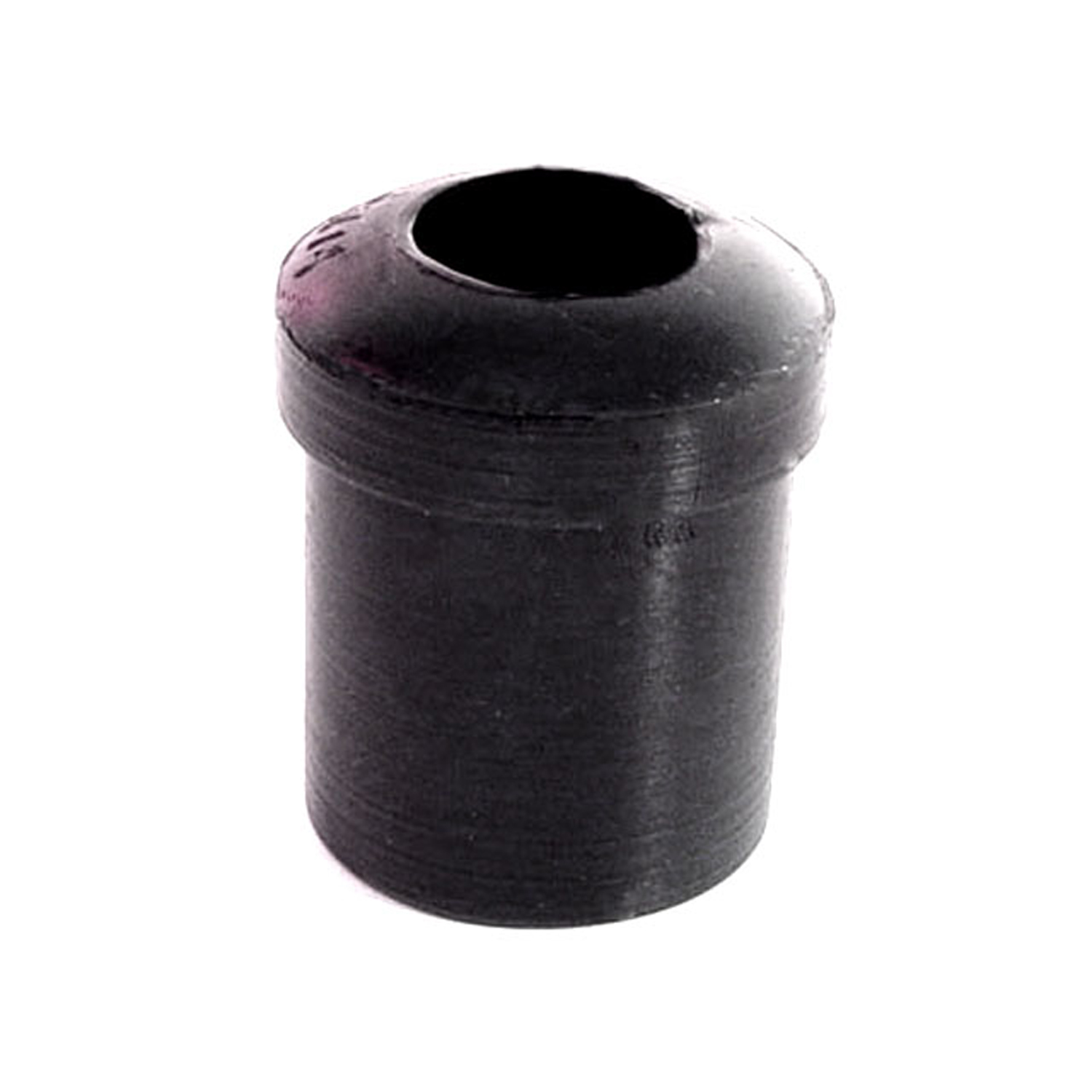 1949 Studebaker Champion Spring and Shackle Bushing. 1-1/16" bottom O.D-BN 14Spring and Shackle Bushing. 1-1/16" bottom O.D. X 1-1/2" high, with 5/8" I.D. Each
1949 Studebaker Champion Spring and Shackle Bushing. 1-1/16" bottom O.D-BN 14Spring and Shackle Bushing. 1-1/16" bottom O.D. X 1-1/2" high, with 5/8" I.D. Each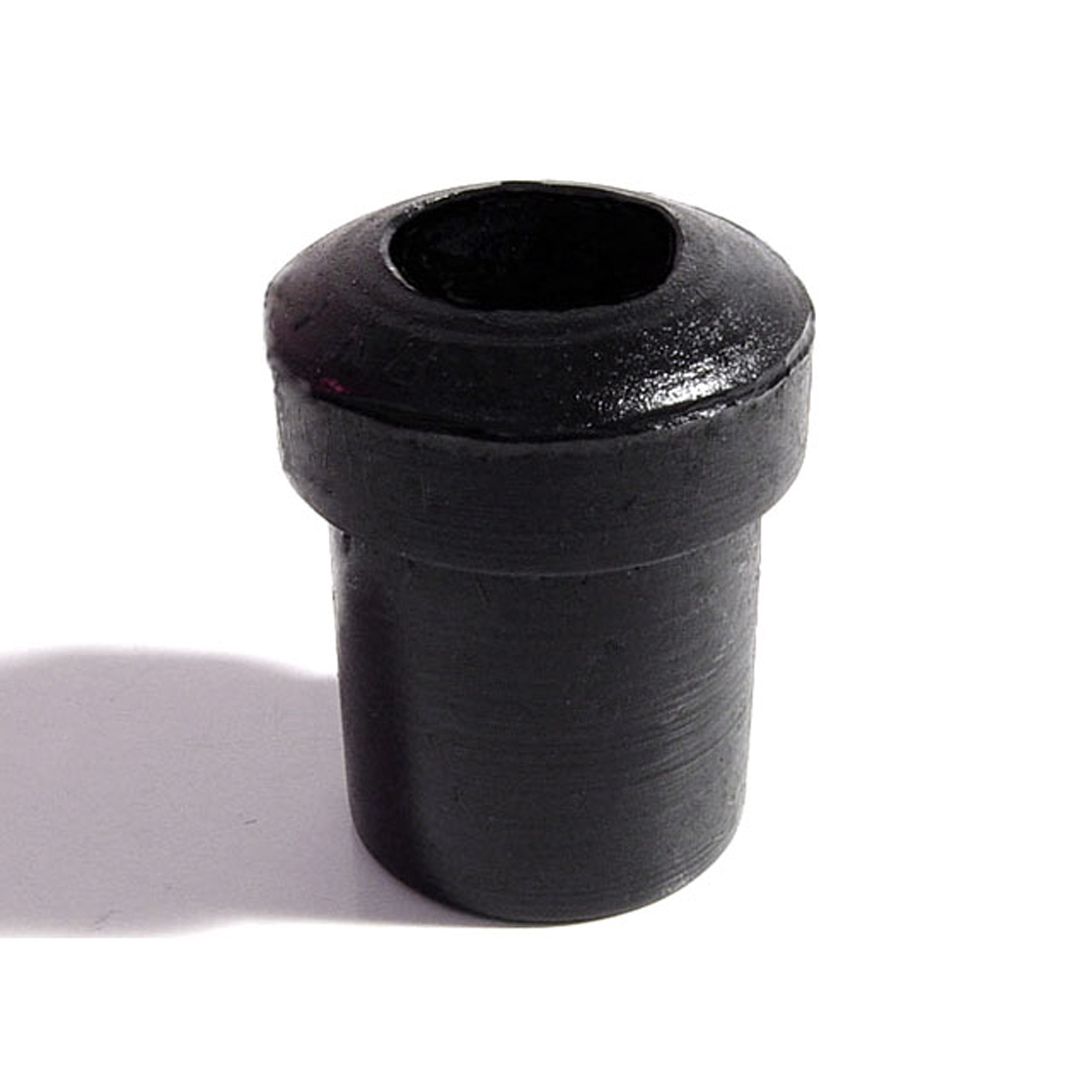 1949 Studebaker Champion Spring and Shackle Bushing. 7/8" bottom O.D-BN 16Spring and Shackle Bushing. 7/8" bottom O.D. X 1-1/8" high, with 1/2" I.D. Each
1949 Studebaker Champion Spring and Shackle Bushing. 7/8" bottom O.D-BN 16Spring and Shackle Bushing. 7/8" bottom O.D. X 1-1/8" high, with 1/2" I.D. Each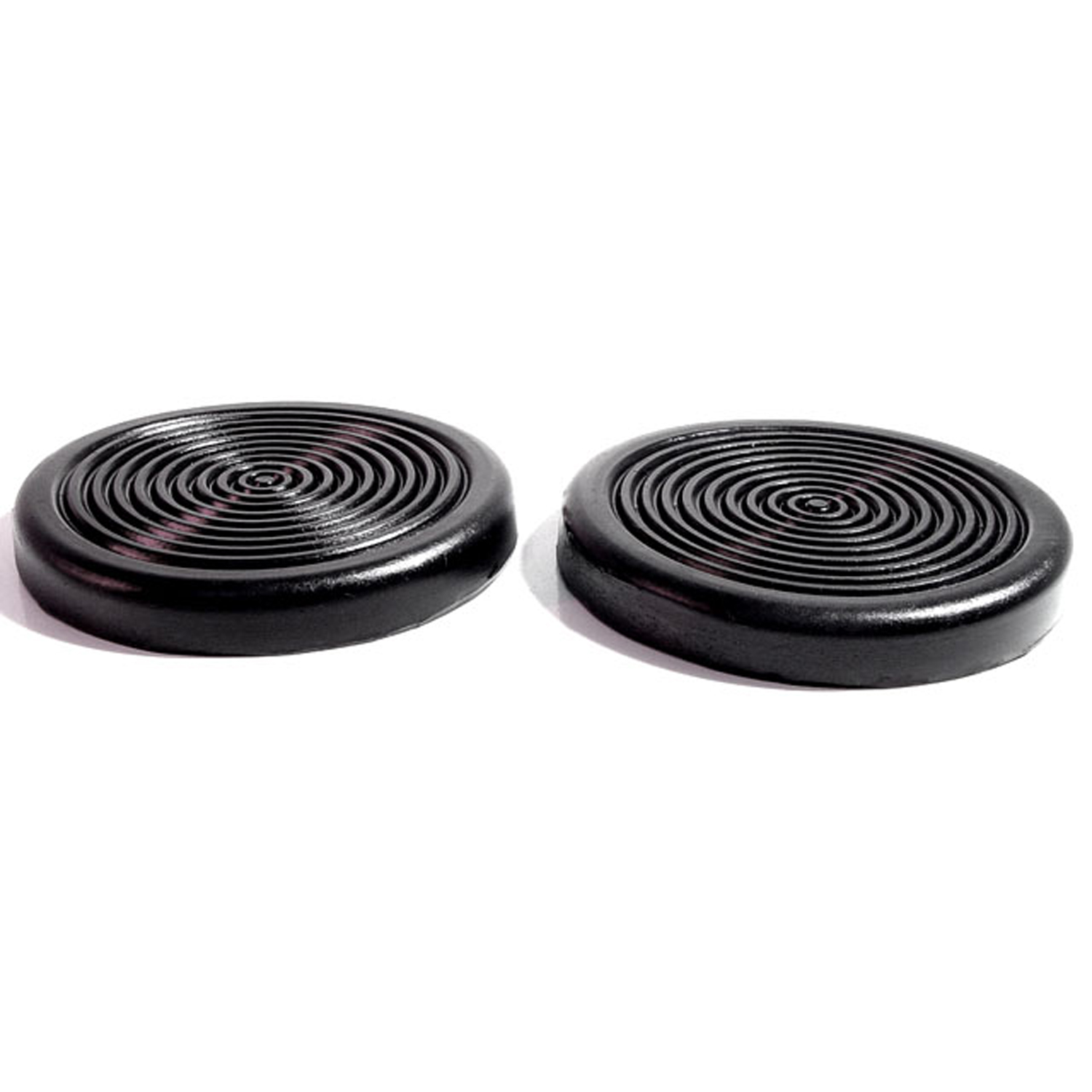 1949 Studebaker Champion Clutch and Brake Pedal Pads. 3" Diameter. Pair-CB 81Clutch and Brake Pedal Pads. 3" Diameter. Pair
1949 Studebaker Champion Clutch and Brake Pedal Pads. 3" Diameter. Pair-CB 81Clutch and Brake Pedal Pads. 3" Diameter. Pair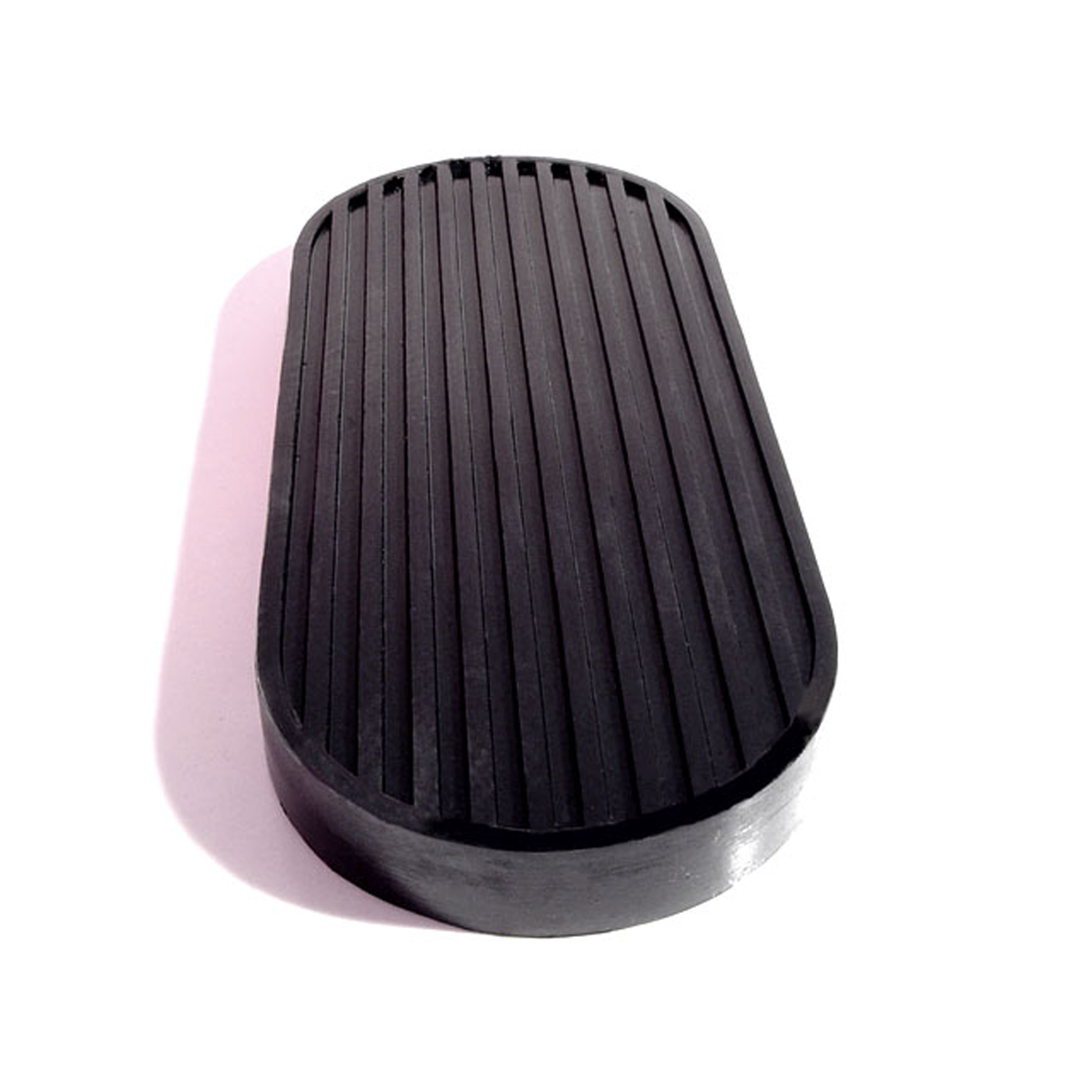 1949 Studebaker Champion Brake Pedal Pad. For models with automatic transmission-CB 87Brake Pedal Pad. For models with automatic transmission. 3" wide X 7-1/8" long. Each
1949 Studebaker Champion Brake Pedal Pad. For models with automatic transmission-CB 87Brake Pedal Pad. For models with automatic transmission. 3" wide X 7-1/8" long. Each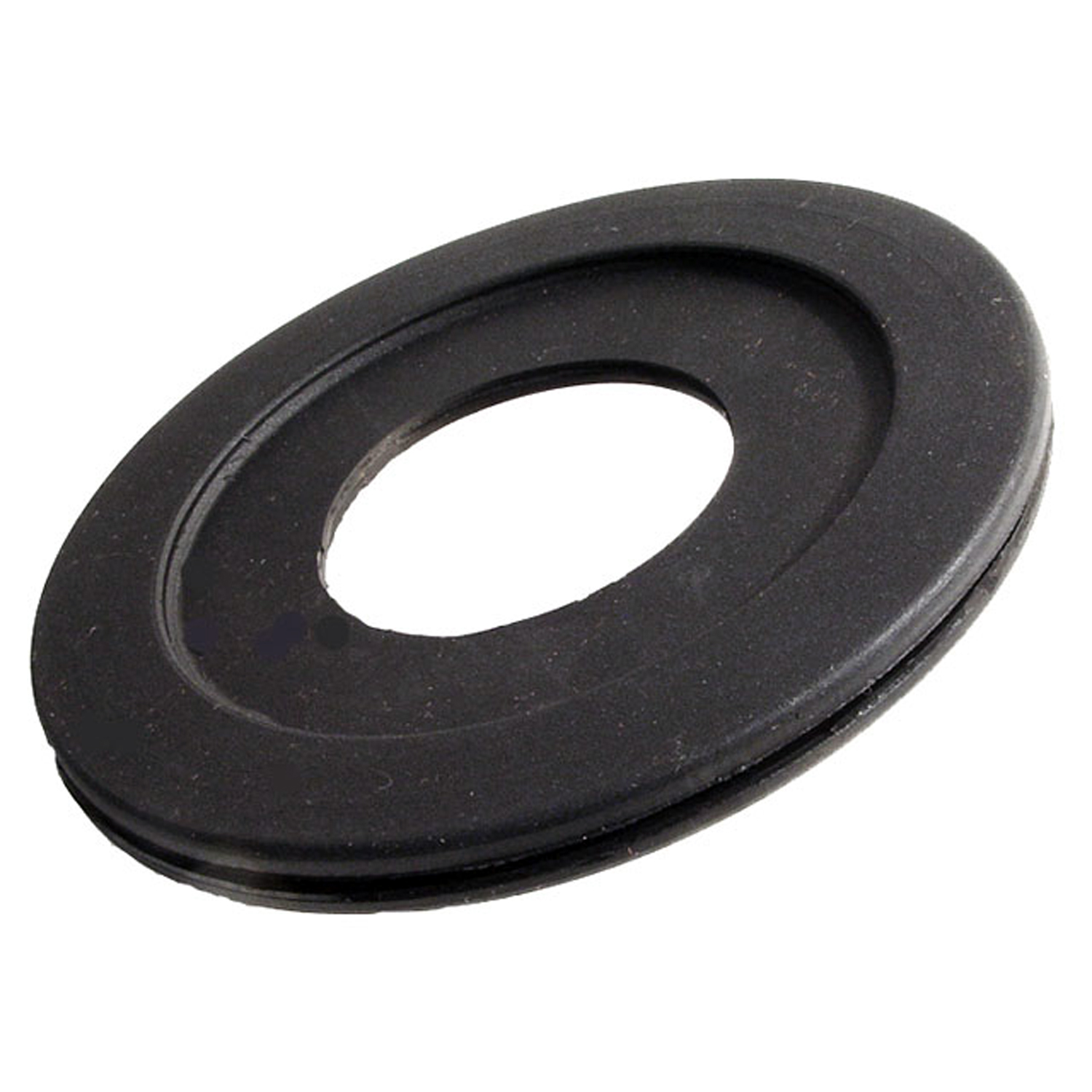 1949 Studebaker Champion Gas Filler Grommet. 1-3/4" I.D., 4-3/8" O.D. Each-GF 31Gas Filler Grommet. 1-3/4" I.D., 4-3/8" O.D. Each
1949 Studebaker Champion Gas Filler Grommet. 1-3/4" I.D., 4-3/8" O.D. Each-GF 31Gas Filler Grommet. 1-3/4" I.D., 4-3/8" O.D. Each 1949 Studebaker Champion Gas Filler Grommet. Perfect reproduction. Top 2-1/16" I.D-GF 45Gas Filler Grommet. Perfect reproduction. Top 2-1/16" I.D., 3-7/16" O.D. Each
1949 Studebaker Champion Gas Filler Grommet. Perfect reproduction. Top 2-1/16" I.D-GF 45Gas Filler Grommet. Perfect reproduction. Top 2-1/16" I.D., 3-7/16" O.D. Each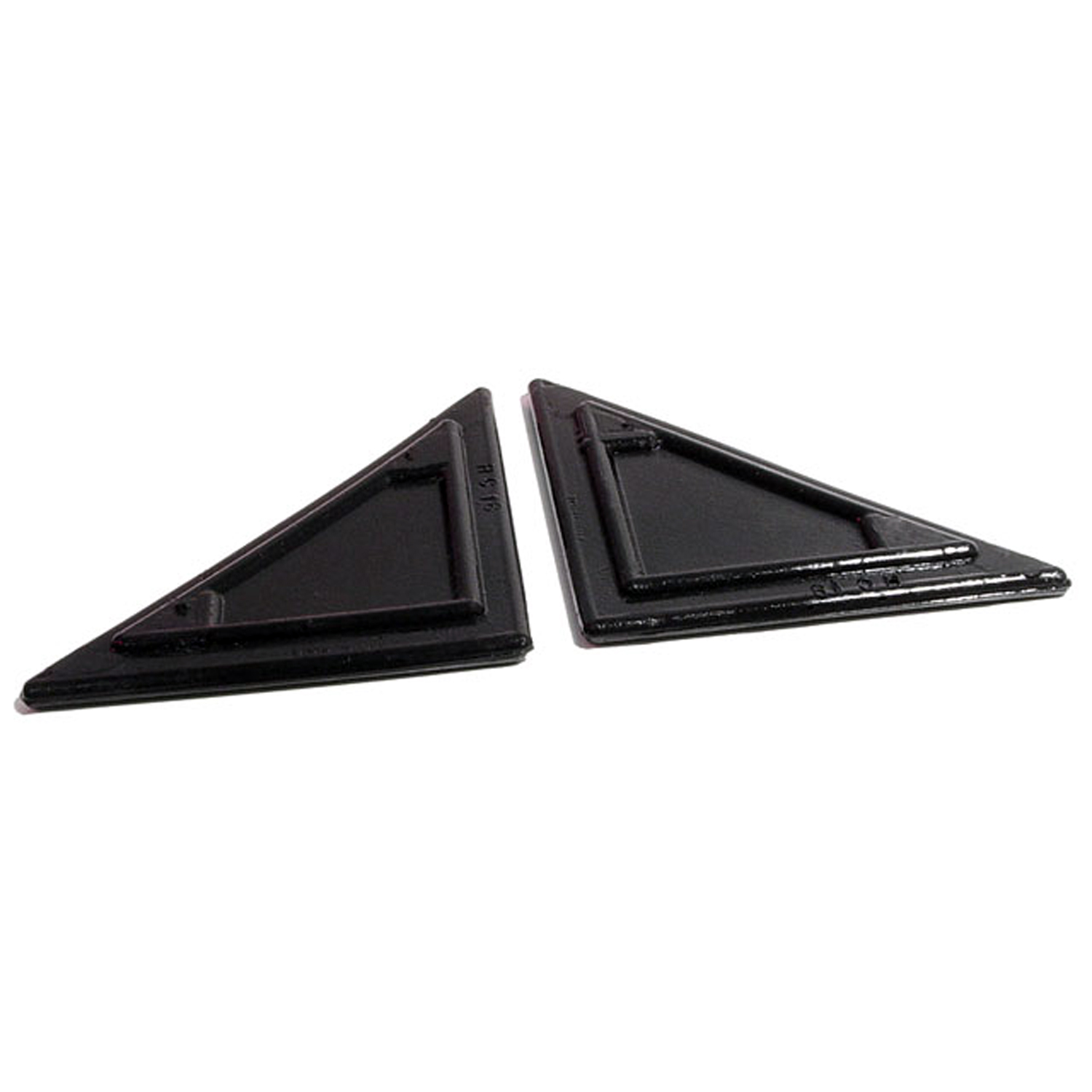 1949 Studebaker Champion Hood Corners. Original design. 2-3/4" wide. Pair-HC 18Hood Corners. Original design. 2-3/4" wide. Pair
1949 Studebaker Champion Hood Corners. Original design. 2-3/4" wide. Pair-HC 18Hood Corners. Original design. 2-3/4" wide. Pair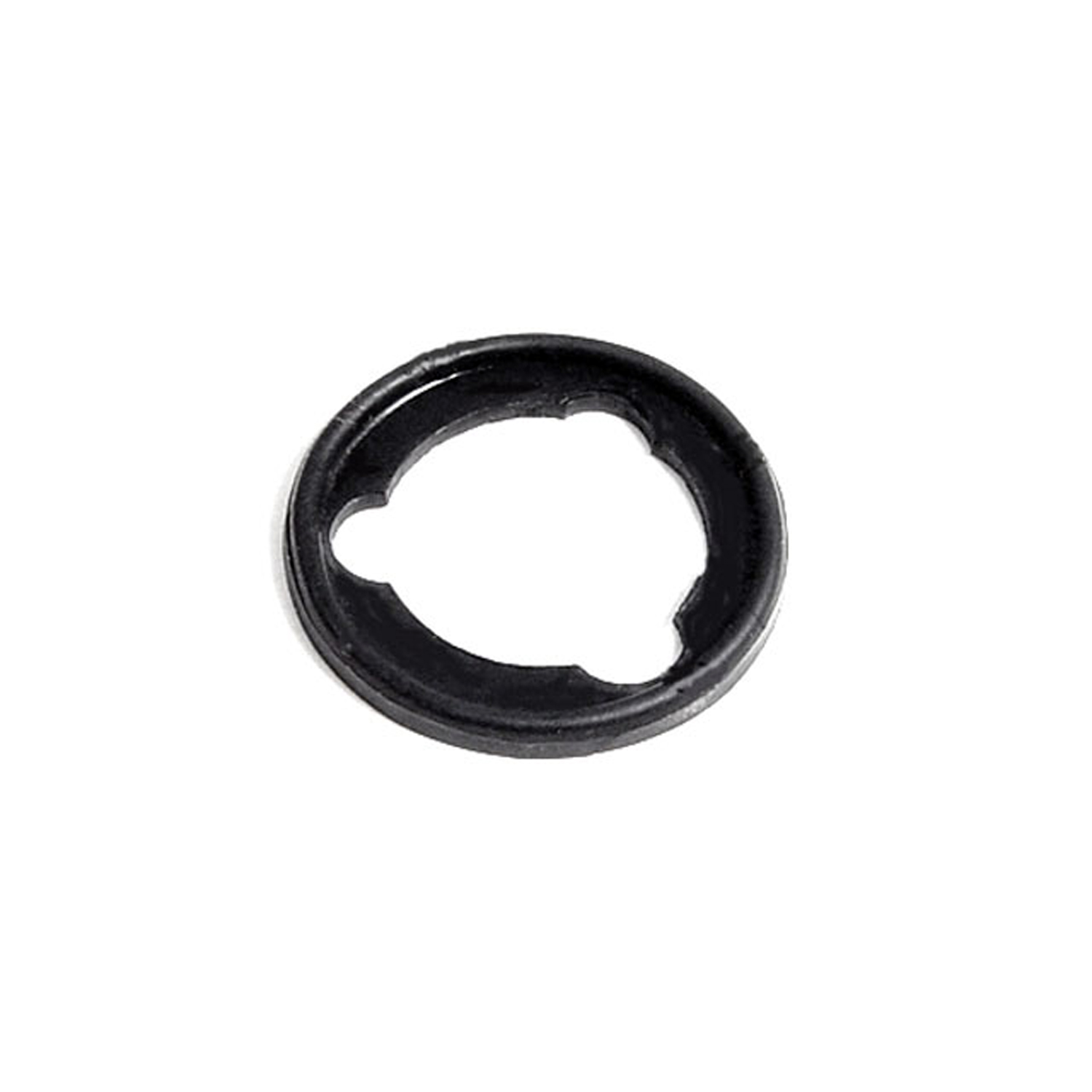 1949 Studebaker Champion Door Lock Pad. 1-1/8" O.D. Each-MP 979Door Lock Pad. 1-1/8" O.D. Each
1949 Studebaker Champion Door Lock Pad. 1-1/8" O.D. Each-MP 979Door Lock Pad. 1-1/8" O.D. Each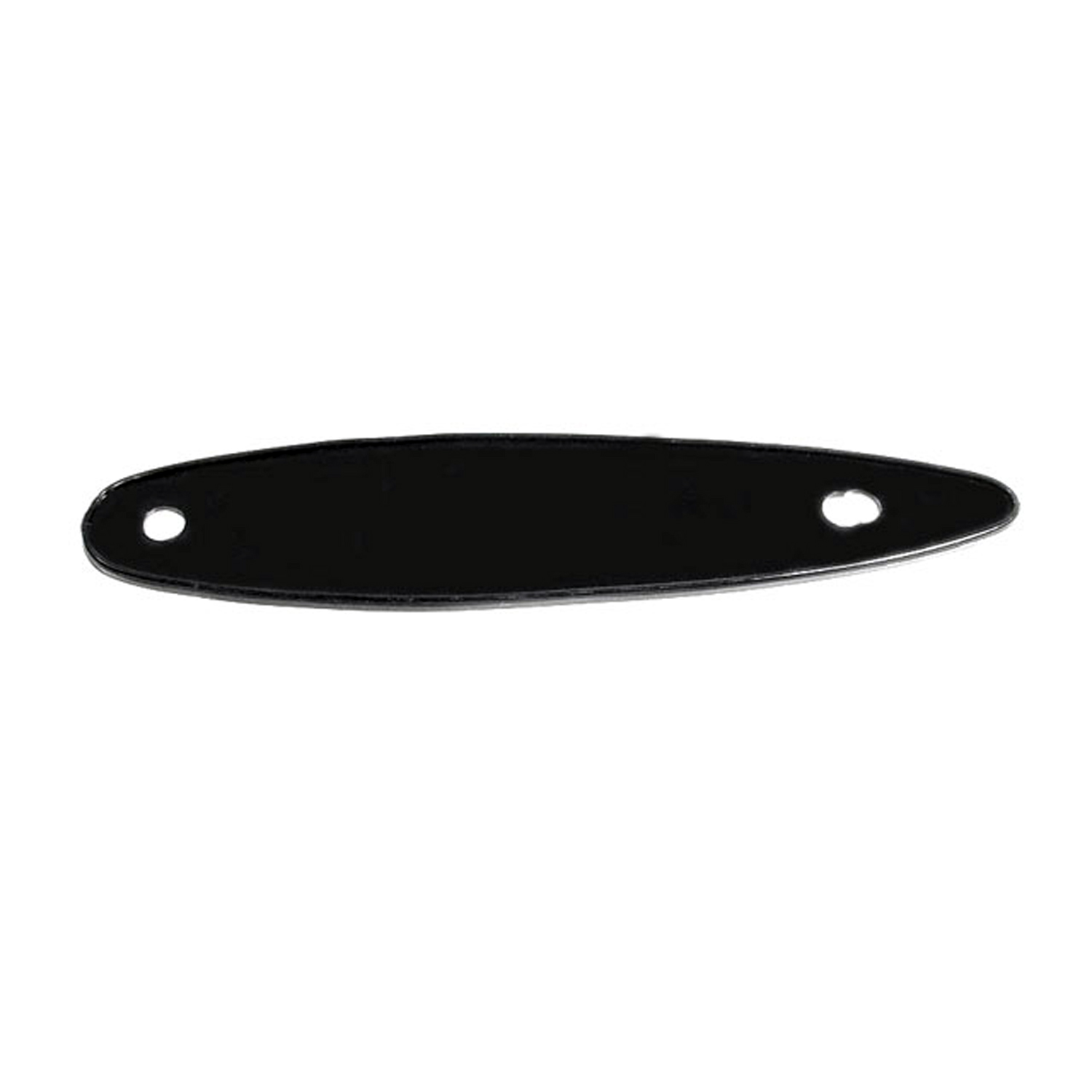 1949 Studebaker Champion Mirror Pad. 1-5/8" wide X 7-3/8" long. Each-MP 979-BMirror Pad. 1-5/8" wide X 7-3/8" long. Each
1949 Studebaker Champion Mirror Pad. 1-5/8" wide X 7-3/8" long. Each-MP 979-BMirror Pad. 1-5/8" wide X 7-3/8" long. Each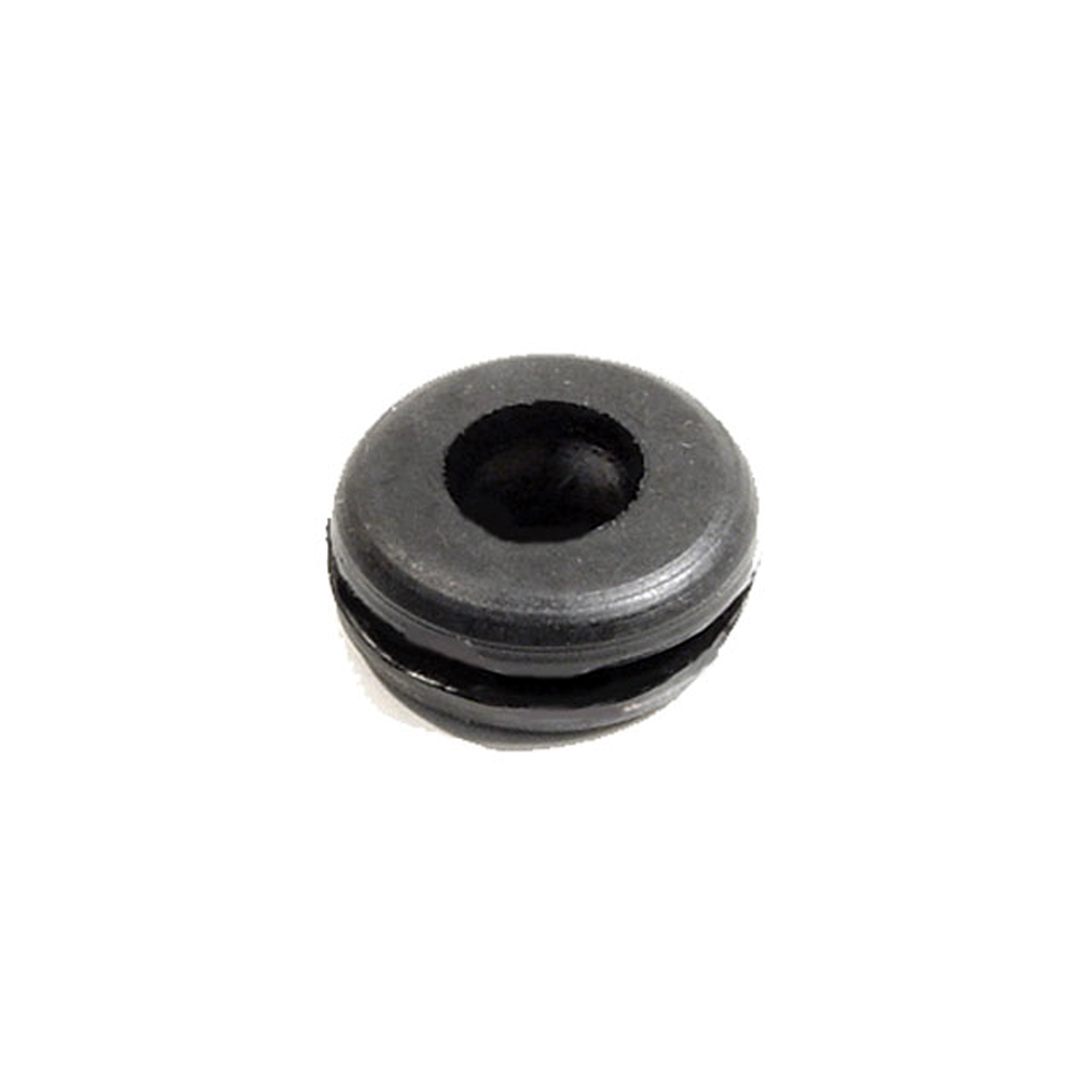 1949 Studebaker Champion Headlight & Tail-Light Wire Grommet. 3/8" I.D., 7/8" O.D-SM 13-AHeadlight & Tail-Light Wire Grommet. 3/8" I.D., 7/8" O.D. Each
1949 Studebaker Champion Headlight & Tail-Light Wire Grommet. 3/8" I.D., 7/8" O.D-SM 13-AHeadlight & Tail-Light Wire Grommet. 3/8" I.D., 7/8" O.D. Each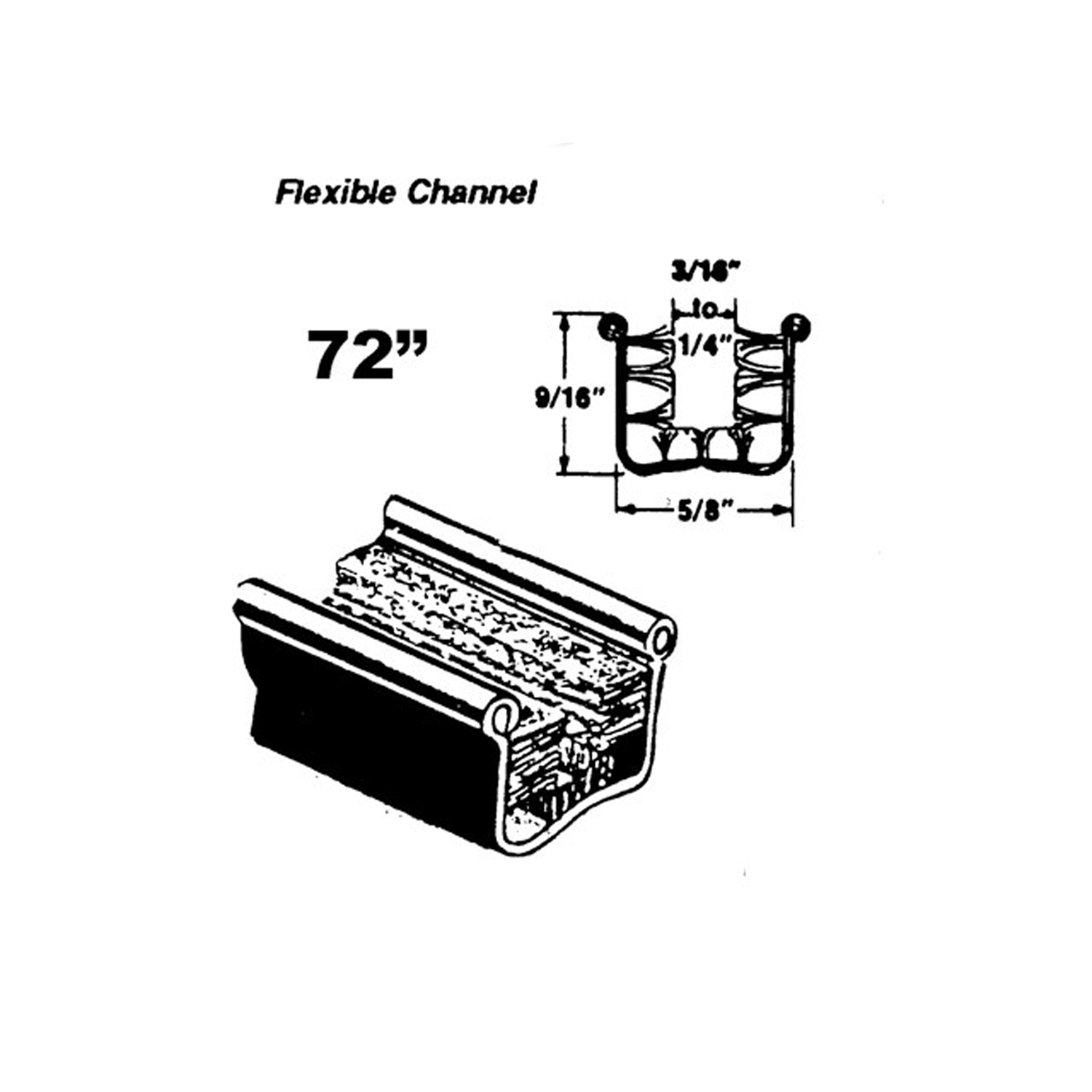 1949 Studebaker Champion Flexible glass-run channel-WC 11-72Flexible glass-run channel. Mohair lined, cloth covered with stainless steel bead. Used on side windows. 72 in. long. Each. NOTE: $20 special shipping charge applies for domestic orders. Call or email for overseas shipping costs. Part can be sectioned in two equal lengths to reduce overseas shipping costs.
1949 Studebaker Champion Flexible glass-run channel-WC 11-72Flexible glass-run channel. Mohair lined, cloth covered with stainless steel bead. Used on side windows. 72 in. long. Each. NOTE: $20 special shipping charge applies for domestic orders. Call or email for overseas shipping costs. Part can be sectioned in two equal lengths to reduce overseas shipping costs.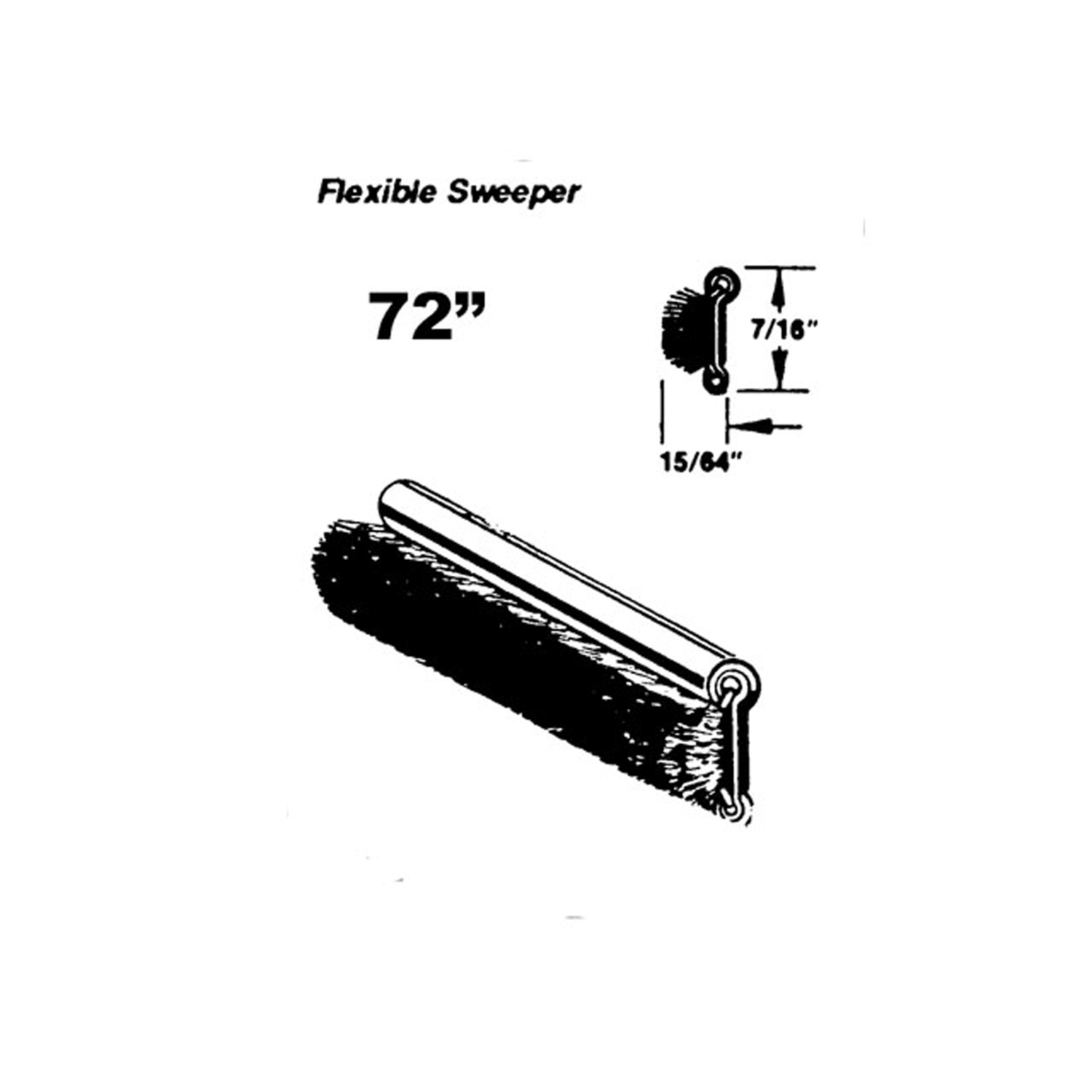 1949 Studebaker Champion Flexible sweeper. Made with stainless steel bead-WC 8-72Flexible sweeper. Made with stainless steel bead. Used on inner and outer beltlines. Also forms easily for use with sliding quarter windows. 72 in. long. Each. NOTE: $20 special shipping charge applies for domestic orders. Call or email for overseas shipping costs. Part can be sectioned into two equal lengths to reduce overseas shipping costs.
1949 Studebaker Champion Flexible sweeper. Made with stainless steel bead-WC 8-72Flexible sweeper. Made with stainless steel bead. Used on inner and outer beltlines. Also forms easily for use with sliding quarter windows. 72 in. long. Each. NOTE: $20 special shipping charge applies for domestic orders. Call or email for overseas shipping costs. Part can be sectioned into two equal lengths to reduce overseas shipping costs.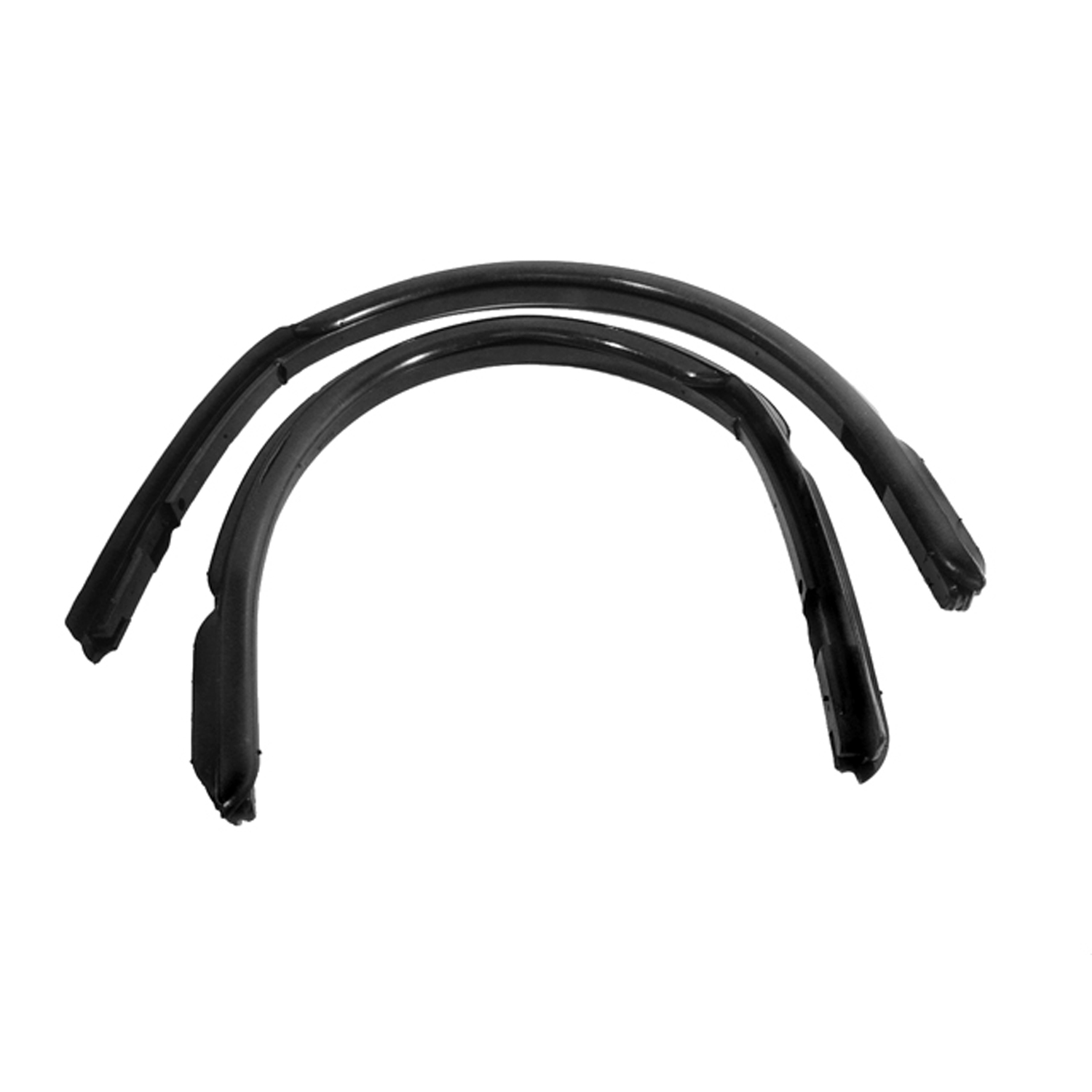 1949 Studebaker Champion Front Vent Window Seals-WR 9400Front Vent Window Seals. For all sedans '47-'50, for 2-door sedans '51-'52. Pair
1949 Studebaker Champion Front Vent Window Seals-WR 9400Front Vent Window Seals. For all sedans '47-'50, for 2-door sedans '51-'52. Pair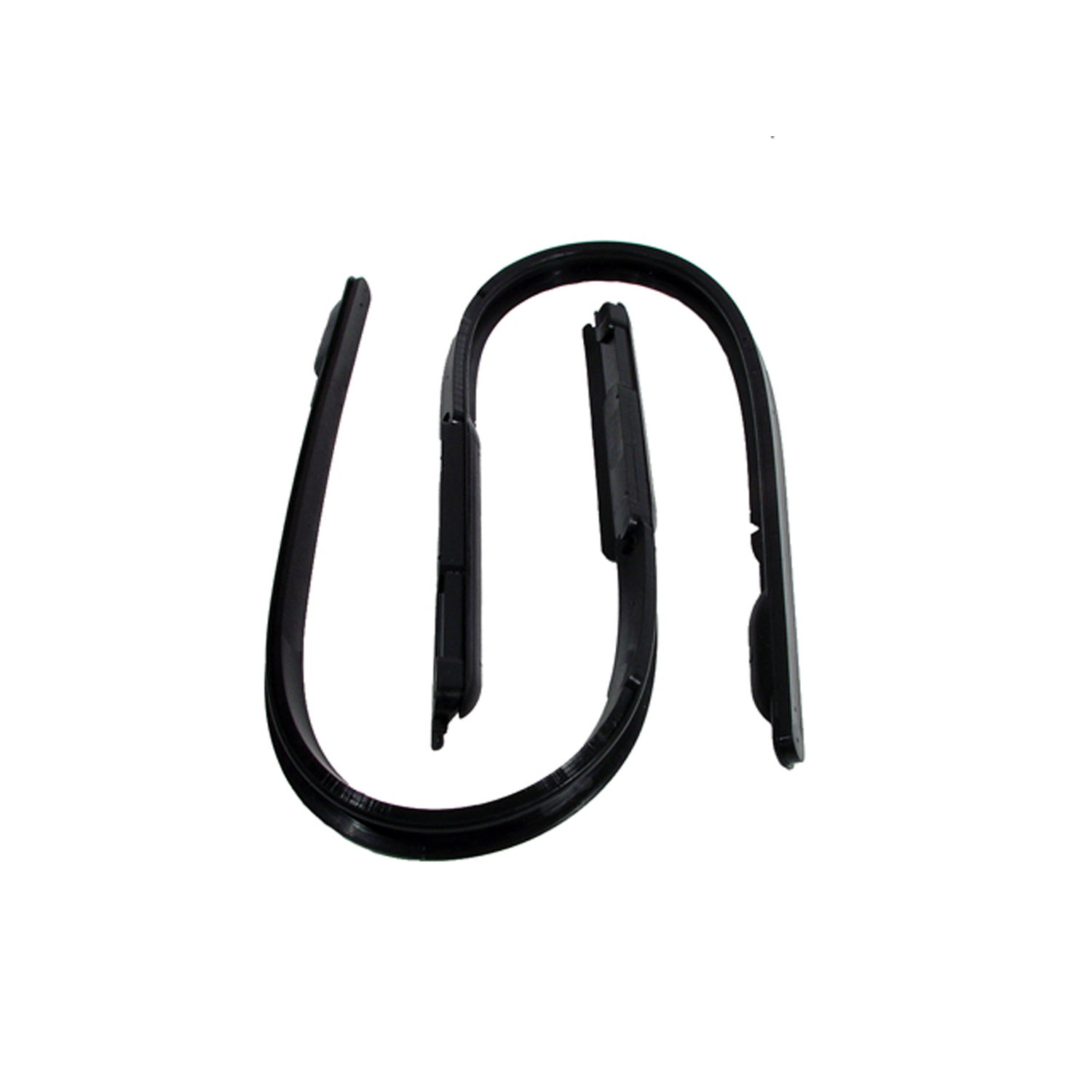 1949 Studebaker Champion Front Vent Window Seals, for Convertibles-WR 9403Front Vent Window Seals, for Convertibles. 28-1/4" long each. Pair R&L
1949 Studebaker Champion Front Vent Window Seals, for Convertibles-WR 9403Front Vent Window Seals, for Convertibles. 28-1/4" long each. Pair R&LWhy Choose Metro?
For over 100 years, Metro Moulded Parts has been the pinnacle of quality in classic car restoration parts. Our commitment to precision and authenticity in every component ensures a perfect fit and an OEM-level appearance.
- Expert Craftsmanship & Quality: Each part is a testament to our dedication to reliability and perfection, crafted from original designs and thoroughly tested.
- Advanced Technology: We use cutting-edge techniques to create flawless, long-lasting parts that surpass others in performance.
- SuperSoft Sponge – The Ultimate Door Seal: Not only are our door seals 30% softer than competitors', but they're also guaranteed to never leak. They effectively reduce wind and road noise, enhancing your classic car's comfort and driving experience.
- Proudly American: Our parts are a product of American craftsmanship, made in the USA with a spirit of excellence and heritage.
- Unrivaled Warranty: We back our products with a 30-year industry-leading warranty, a testament to our confidence in their quality.
Join us in preserving the legacy of classic cars with parts that are crafted for perfection, not just made.

